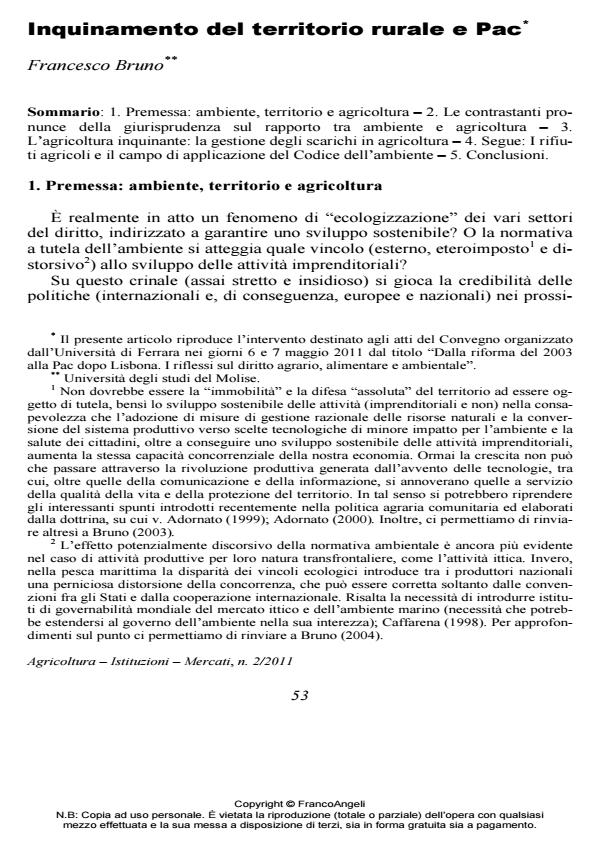Pollution of Rural Areas and Cap (Common Agricultural Policy)
Journal title AGRICOLTURA ISTITUZIONI MERCATI
Author/s Francesco Bruno
Publishing Year 2011 Issue 2011/2
Language Italian Pages 24 P. 29-52 File size 306 KB
DOI 10.3280/AIM2011-002004
DOI is like a bar code for intellectual property: to have more infomation
click here
Below, you can see the article first page
If you want to buy this article in PDF format, you can do it, following the instructions to buy download credits

FrancoAngeli is member of Publishers International Linking Association, Inc (PILA), a not-for-profit association which run the CrossRef service enabling links to and from online scholarly content.
Alongside the market measures and elements of a competitive European agriculture, the varied needs of the rural world must also be recognised, together with the expectations of today’s society and environmental requirements. The main features of this development can be defined as follows: strengthening the agricultural and forestry sector, improving the competitiveness of rural areas and preserving the environment. Protagonist is the multifunctional farm business with the nature protection measures and maintenance of landscape. The fundamental basis of the European model in fact lies in the multifunctional nature of Europe’s agriculture and the part it plays in the economy and the environment, in society and in preserving the landscape. This creates a specific need to maintain farming throughout Europe and to safeguard farmers’ incomes and it is therefore appropriate to pay farmers to preserve the environment through privately owned resources or factors of production: this is the environmental service of the modern agriculture. However, if new objectives of the rural development policy are clear, the legal instruments are not so easy to understand, and the rulings of the courts are conflicting and not clear into the individuation of the environmental role of agriculture.
Keywords: Pollution, Cap, Rural Areas
Francesco Bruno, Inquinamento del territorio rurale e Pac in "AGRICOLTURA ISTITUZIONI MERCATI " 2/2011, pp 29-52, DOI: 10.3280/AIM2011-002004